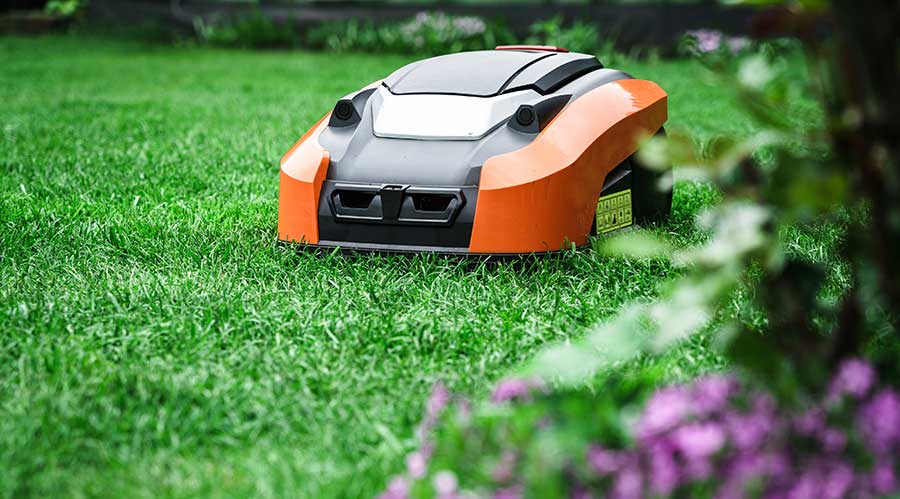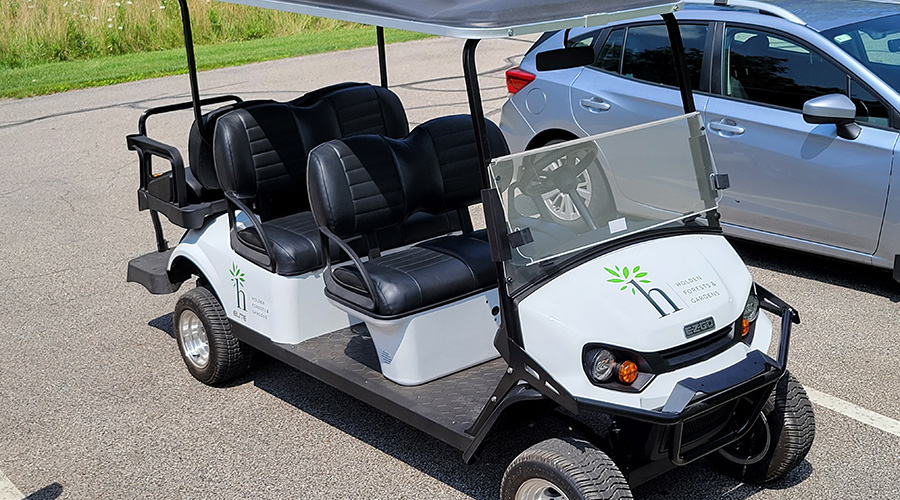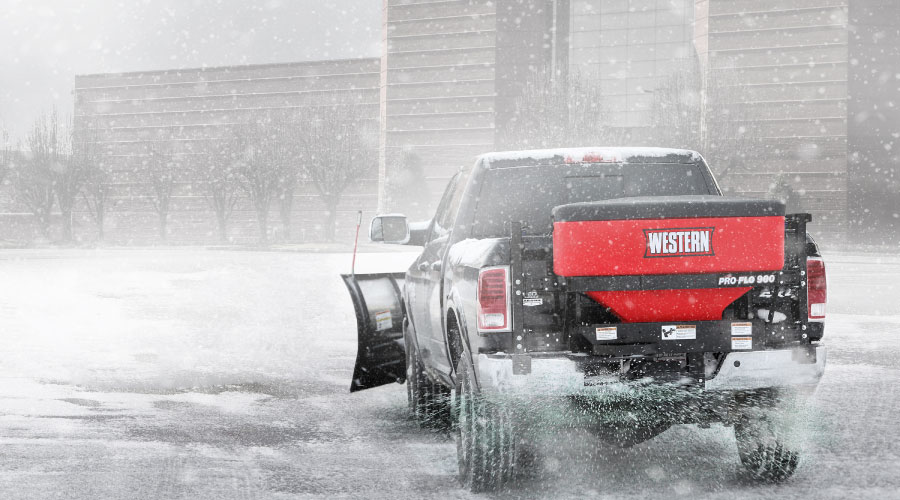Mowers: The Big Picture
Manufacturers offer insights and strategies for managers in the market for large-area mowers
Few things are more pleasing to grounds managers’ ears than the phrase greater productivity. Managers spend many hours mulling over schedules, turf conditions, worker skills, and equipment and materials costs, all in an effort to squeeze even a little more productivity out of their staffs. Because mowing can eat up so much time, equipment and labor, managers are especially pleased when they can find ways to mow more productively.
Managers who have landscapes that feature large, wide-open areas face an even greater challenge, given the size of the turf areas to maintain and the specification of mowing equipment.
Specifying the most appropriate large-area mower requires an understanding of mower speed and size, as well as the equipment’s operation and maintenance demands. But the biggest hurdle might be getting beyond the high first cost and determining the productivity gains — an essential element in making the case for investing in large-area mowers.
Size? Speed? Both?
Manufacturers offer an array of mowers designed to help departments take care of large areas, whether those areas are around schools, universities, or hospitals, on airport grounds, or in municipal parks.
“The largest mower we produce at this time is a 61-inch (model),” says Harold White, vice president of sales and marketing with Wright Manufacturing. “Presently, we are testing a number of 72-inch decks.”
The Grasshopper Co. makes several mowers that accept 72-inch decks, says Ruthanne Stuckey, the company’s marketing director, adding the mowers come with a choice of gasoline or diesel engines, with the latter meeting requirements for alternative fuel.
John Deere’s large-area mower spans about 11 feet and features three wings — one in front and one on each side, says Gilbert Peña, the company’s segment strategy manager.
Because of the large areas involved, managers tend to focus on how quickly the mower can finish the job. Although completing the task as quickly as possible is essential, that is hardly the only component of productivity.
“Productivity — mowing more acres per hour — is probably the main driver for a large-area mower,” Stuckey says. “But there is more to productivity than volume. Efficiency is another consideration.”
Adds White, “It is not always the size or speed of a machine that is the most efficient. Lawn-maintenance professionals know that speed means more than just miles per hour on a straightaway.”
Productivity also means the way the mower is performing while it’s completing a job quickly. For example, Peña points out that the wings on John Deere’s largest mower can tilt up 45 degrees and down 20 degrees to enable the mower to cut more efficiently on sloped terrain.
“This reduces the time for anyone coming behind you trimming,” he says.
Purchasing considerations
Large-area mowers present managers with a wider range of considerations than their smaller counterparts, and those considerations go well beyond cost, speed, and size. Their higher price tags, combined with these considerations, mean managers need to do more research before committing the organization’s resources to such a big-ticket purchase.
For example, managers need to understand the different maintenance considerations for large-area mowers, which are generally greater if not always different than smaller mowers.
“Maintenance by the nature of the machines is more complex; they need more attention,” Peña says, adding they have more grease points and hydraulic lines than their smaller counterparts.
Despite their size, larger mowers remain relatively easy to maintain and operate because of advances in both technology and user-friendly design.
“When using zero-turn equipment, there is less operator training because there are no gears to shift and it’s more intuitive to operate,” Stuckey says.
Says Peña of John Deere’s mower, “It’s no more difficult than a front-turn, zero-turn-radius mower,” adding its operators probably have moved up from a front-mount rotary mower and that John Deere’s largest mower has a similar setup and features power takeoff control for each wing. Part of the training to operate the mower is understanding the need to slow down and ease into turns because moving too quickly or sharply can cause the decks to stop, he says.
For the largest mowers, managers also must understand their transportation requirements. Many models are fast enough and small enough to operate on streets and roads, but others require crews to use a trailer to move them between work sites.
“The unit measures 85 inches across with both wings up,” Peña says. That width is not a problem on a flatbed truck, he says, but on trailers with angle-iron edges, operators will need to make sure the built-up sides don’t make the trailer too small to haul the unit.
While large-area mowers offer departments size and speed, many also offer a series of attachments that makes them even more appealing to departments with budget and staffing limitations.
For example, Grasshopper offers various attachments, including an edger, a solid-tine oscillating coreless aerator, a turbine blower, a driftless sprayer, a dozer blade, a rotary broom, a snow thrower, a bed shaper, and a vacuum-collection system, Stuckey says. Users can configure its FrontMount deck for three functions: side discharge, mulching, and vacuum collection, and a rear-discharge deck also converts to mulching, side discharge, and vacuum collection, she says.
Finally, managers will need to take user comfort into consideration.
“If you’re investing in this machine, it’s going to be running for a long time each time,” Peña says.
Manufacturers of large mowers address this by designing a range of specific features, including controls within easy reach of feet and hands, seats with lumbar support, cup holders, and even cruise control.
White says the design of Wright’s mowers, with the operator behind the rear wheels, seeks to address the parallel issues of ease of use and operator comfort.
On hilly terrain, for example, the mowers’ low center of gravity and operator-balance-control system enable an operator to shift his or her weight to counter the incline, putting weight on the high-drive wheel and increasing traction, power, and control. Placing the operator on or behind the rear wheels makes the front end of the mower lighter, resulting in improved traction and faster mowing, he says.
Making the case
Once the research and testing are complete, perhaps the most important task remains: convince the organization’s financial types a large-area mower is the right equipment option. The best piece of information at this point also is the most elusive: How will the choice of a mower affect productivity?
“When you add zero-turn maneuverability into the equation, and look at all the facets of a job site, it may be more economical to run two 6-foot mowers than one larger one,” Stuckey says. Many customers find they can purchase two smaller power units, mowing decks and implements for the price of a larger wide-area mower and still accomplish mowing tasks, along with edging, blowing and spraying, and do so in less time, she says.
Says Peña, “The more obstacles you have, the more productive the smaller machines become.”
To make the case for large-area mowers, he says he often asks customers whether they would rather deal with fewer people and fewer machines, adding that John Deere’s mower is equal to about two large mowers and two people to operate them.
Whatever decision a manager makes regarding large-area mowing equipment, its success will hinge not on up-front cost, speed, or size. It will hinge on how much the mower contributed to productivity. Keeping that issue at the center of the decision is likely to help managers specify the most appropriate equipment for the job.
Related Topics:











